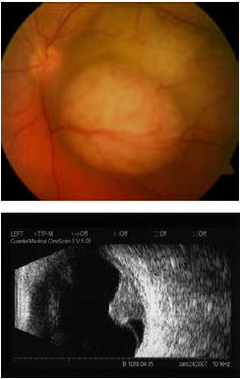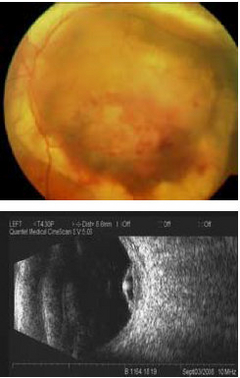Uveal melanoma
The ERCM has already treated over 1000 patients with uveal melanoma and thus offers the most comprehensive radiosurgical experience with this cancer worldwide.
With the Cyberknife technology, uveal melanoma is treated on an outpatient basis and without surgical intervention. A hospital stay is not required. For patients, this means that they can continue with their usual daily routine. After the treatment, you can usually keep on your usual activities.
The indication for treatment is made in close cooperation with colleagues from the Eye Clinic at the University of Munich (LMU). A decision is made on a case-by-case basis as to whether Cyberknife treatment is the best and safest therapy option.

Uveal melanoma in a 61-year-old patient before Cyberknife treatment.

The uveal melanoma 20 month
after the Cyberknife treatment.
There is just a little scar tissue remnant visible on ultrasound imaging.



